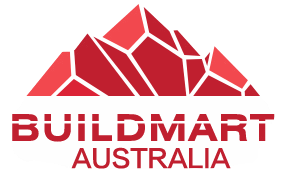Artificial grass has become a popular choice for homeowners and commercial spaces alike, thanks to its evergreen appearance and minimal maintenance requirements. Unlike natural grass, it does not require watering, mowing, or fertilising, making it an environmentally friendly and cost-effective option for landscaping. However, the installation of artificial grass involves more than simply laying it on the ground. Securing it properly is crucial to its appearance, functionality, and longevity. This article explores the methods used to secure artificial grass to the ground and explains why it is essential to do so.
The process of securing artificial grass begins with the preparation of the base. This involves clearing the area of any existing grass, weeds, or debris, and ensuring the ground is level. A stable and even base is critical to prevent sagging or wrinkling of the artificial turf over time. Once the area is prepared, a layer of crushed stone or gravel is spread and compacted to create a solid foundation that facilitates drainage and provides a flat surface for the artificial grass.
On top of the base, a weed barrier fabric is often laid to prevent the growth of weeds through the artificial grass, which can disrupt its uniformity and appearance. The artificial grass is then rolled out over the prepared base, with care taken to ensure it is smooth and free of wrinkles. It is at this point that securing the artificial grass becomes a priority.
Securing artificial grass to the ground can be achieved through various methods, each suited to different types of installations and ground conditions. The most common method involves the use of U-shaped turf pins or galvanised nails, which are driven through the artificial turf and into the base below. These pins or nails are spaced around the perimeter and across the turf at intervals, ensuring the grass is held firmly in place. For installations on soft ground, longer nails may be used to reach deeper into the base for increased stability.
Another method involves the use of adhesive or seam tape, particularly at the edges of the artificial grass or where two pieces of turf meet. This ensures a seamless join that is not only visually appealing but also prevents the edges from lifting or separating over time. For installations on hard surfaces such as concrete, a strong adhesive is applied around the perimeter and at seams, securing the artificial grass directly to the surface.
Securing artificial grass is not merely a procedural step in its installation; it is a crucial aspect that impacts the overall success and longevity of the turf. Properly secured artificial grass remains taut and even, preventing wrinkles, ripples, and shifting that can occur with foot traffic or weather changes. This not only maintains the aesthetic appeal of the turf but also ensures its safety, reducing the risk of tripping hazards.
Moreover, securing artificial grass protects against the effects of wind uplift. In areas prone to high winds, unsecured or inadequately secured artificial grass can be lifted from the ground, damaging the turf and the base. By firmly anchoring the grass, it remains in place regardless of weather conditions, ensuring its durability and the safety of those who use it.
The importance of securing artificial grass also extends to its maintenance and longevity. Well-secured artificial turf resists the wear and tear of daily use, maintaining its appearance and functionality for years. It prevents the edges from curling up, which can lead to uneven wear and make the turf more difficult to clean. Furthermore, it minimises the chances of the turf separating from its base, which can create pockets that trap water, debris, or even pests, compromising the turf’s integrity and hygiene.
In conclusion, while artificial grass offers numerous benefits over natural grass, its success as a landscaping solution depends significantly on how well it is secured to the ground. Proper installation and securing techniques ensure that the artificial grass remains attractive, functional, and safe for its intended use. Whether through the use of turf pins, nails, adhesive, or seam tape, securing the turf is a critical step that cannot be overlooked. It is the key to enjoying the full benefits of artificial grass, from its low maintenance and environmental advantages to its durability and aesthetic appeal. As such, homeowners and landscapers should pay careful attention to this aspect of artificial grass installation, ensuring it is done correctly to maximise the investment and enjoyment of their green spaces.
